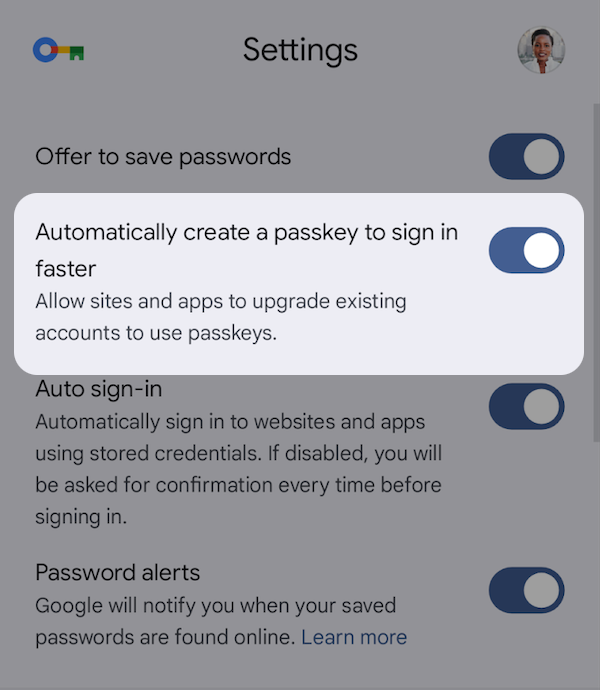Published: October 8, 2025
Passkeys reduce phishing risk and make sign-in easier. Beginning with Chrome 142, Chrome for Android helps users adopt passkeys more seamlessly. If a user signs in with a saved password, your website can request that Google Password Manager (GPM) create a passkey automatically using a WebAuthn API feature called Conditional Create. Chrome does not interrupt the user. After creation, Chrome shows a brief confirmation and a Manage button that opens the new passkey in Google Password Manager settings. Users can turn this feature off in Google Password Manager settings.
What's new
- Automatic creation on Android: Your website can call WebAuthn to create
a passkey with
mediation: "conditional"after a password sign-in. If eligibility checks pass, Google Password Manager creates a passkey without user verification and returns the credential to your website. Clear user notification: Chrome shows a confirmation message and a button to manage the passkey in Google Password Manager.

Confirmation message for automatic passkey creation User control: A toggle in Google Password Manager app settings lets users disable automatic creation across devices. The setting syncs across all of the user's devices.

Google Password Manager settings showing a toggle for automatic passkey creation
Compatibility
- Automatic passkey creation works in Chrome on Android and desktop, and in
other browsers that support the
feature. You can detect conditional
create availability using
getClientCapabilities(). - On Android, Google Password Manager supports automatic passkey creation.
Summary
You can help users move from passwords to passkeys more seamlessly. After a password sign-in, initiate automatic passkey creation to request passkey creation without user verification. Chrome for Android handles eligibility, creates the passkey in Google Password Manager, and lets users manage or opt out of the feature.

